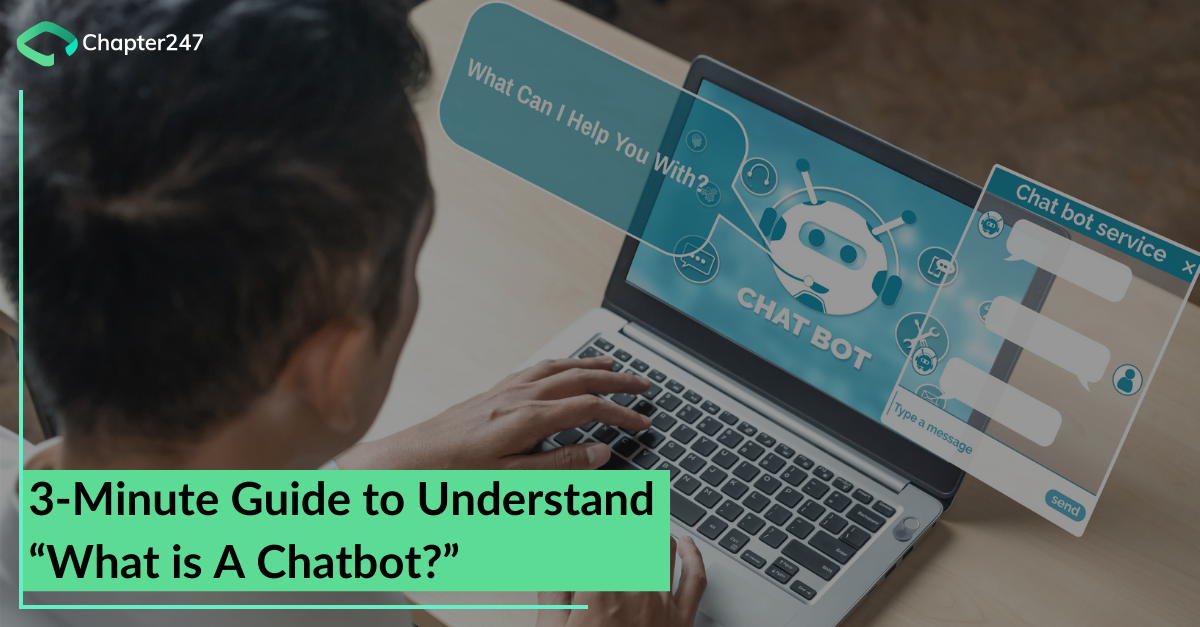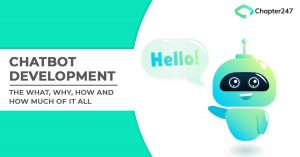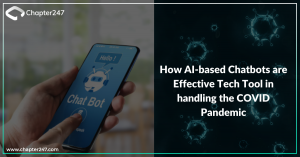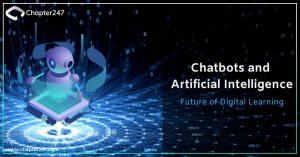With the ever-increasing role of AI and smart digital devices in our daily lives, the term “chatbot” has entered common parlance. Most users of online services are likely to have had an experience with a chatbot themselves, or some basic idea of what a chatbot does.
In this article, we will try to understand what a chatbot is, the types of chatbots available in the market, their benefits, and their future potential.
An Introduction to Chatbots
A chatbot can be defined as a program intended to simulate online conversations by leveraging the power of AI. These conversations usually take place between the chatbot and one or more human users and are designed to mimic real-life responses as closely as possible. The concept of using machines to mimic human partners in conversation is hardly of recent invention.
Alan Turing, the Father of Modern AI, designed the Turing Test to determine if an intelligent system is capable of human-like thought and behaviour. One of the core features of this test was to engage an Artificial Intelligence system with a human being in conversation, and then to judge whether the responses were sufficiently ‘human.’
ELIZA, a chatbot designed by MIT professor Joseph Weizenbaum in 1966, successfully passed the Turing Test, ushering in an era of chatbot solution usage in various industrial and scientific domains.
Chatbots were also used in MSN to interact with users on a variety of topics. However, the underlying reality remained that these Chatbots were not “smart.” They were only programmed to answer question-based on pattern recognition of a limited range of keywords.
With time, AI has empowered chatbots to be used more like Personal assistants, with IBM Watson, SIRI, and ALEXA all being examples of programs who have broken the stereotypical image of chatbots.
Types of Chatbots
Chatbots can be broadly classified into three categories:

Menu-based
Chatbots, which are Menu/button-based, represent the most basic type of application available in the market. These possess a layer of abstraction over the legacy system of hierarchical trees of buttons and their corresponding options, akin to automated phone menus, and may require considerable effort on the user’s part to get the desired answer.
Though these can be useful to answer FAQs, they are somewhat incapable of handling more complex queries requiring multiple variables and in-depth knowledge. They are also considered rather slow compared to their counterparts in this regard.
Keyword-based
Keyword-based chatbots attempt to reply to the user by searching for indicative keywords in the body of the text. For example, if a user were to ask, “What is the cost of XYZ mobile phone?”
The chatbot would then pick keywords like “cost” and “XYZ mobile phone” to first obtain the details of that particular phone and then extract its cost from the relevant body of knowledge.
Contextual
Contextual Chatbots leverage the power of ML and AI to analyse and understand the actual context of the conversation and answer the user accordingly. It tends to store critical information nuggets about the user and trains itself to understand the user’s needs better.
Reinforcement Learning is also a key strategy in developing such chatbots as it allows the program to learn from its previous mistakes and to generate better conversations in the future.
Chatbot Examples
Chatbots are gradually becoming omnipresent on the Internet, some prominent types of chatbots are as follows:

Weather Bot
These provide information about the weather in an interactive way. Telegram has a bot for Weather Applications which give details on the current temperature, humidity and wind speed based on either a particular city or a specific location.
Grocery Bot
Grocery bots help to maintain lists of grocery stocks and order groceries akin to a personal assistant. The Grocery List bot on Telegram is a prime example of this kind of application.
News Bot
They allow the user to access news streams tailored to their interests and also provide news items similar to those being accessed by the user. getnewsbot is a good example.
Life Advice Bot
These bots help shore up emotional resilience and provide personalized advice on tackling lifestyle situations. Wysa is an example of this kind of bot.
Personal Finance Bot
These interact with the user to solve personal finance issues and provide pertinent advice. They also offer UI’s to help manage personal finances. Cleo, a personal finance bot, has gained traction in the market.
Scheduling Bot
Meetings, events, and everything else under the Sun can be scheduled at the touch of a button with scheduling bots. X.ai is a prominent bot in this domain.
Bot Friend
Sometimes, you need to loosen up and talk to someone anonymous without bothering about being judged. Bots like Replika have arrived in the market to do just that.
Benefits of using Chatbots

Since their inception in various domains, chatbots have proved useful to organizations in the following ways:
Greater sales
Chatbots provide a prompt response to customer queries and help acquire valuable information about customer needs and behaviour, thereby allowing the company to pitch products suitable to them and increase sales.
Cost reduction
Chatbots are active 24/7 and can handle multiple clients at a time, providing a more cost-effective option than hiring staff to do the same tasks, with the same efficiency.
Accuracy
Chatbots ensure a coherent and optimized interaction with clients thereby helping the organizations to more accurately understand market needs and take better decisions.
Client retention
Client engagement is crucial for client retention. Chatbots help to keep the client engaged and maintain client attention, which results in fewer clients turning away due to lack of response.
Chatbots and the future

Gartner has predicted that chatbots have passed the so-called ‘peak of hype’ and is now entering the ‘trough of disillusionment’ in which expectations from chatbot use will need to be made more nuanced and conservative.
Organizations are now starting to look at chatbots as more than high-tech add-ons and more as a means of value-add to the company’s core processes. Response time as well as quality, now come with SLA’s and chatbots are increasingly being tailored for not only particular domains, but also particular customer segments.
A Final Word
Choosing the right chatbot solution depends on understanding user requirements and on maximizing the generation of value from user interactions. The choice of chatbot-type, as well as UI, can significantly affect UX, with some users preferring a menu-style layout for FAQ’s to others preferring a more dynamic conversationalist variety of application.
While developing a chatbot solution for your service, it is vital to hire someone with both domain knowledge as well as technical know-how. Chapter247 Infotech, is a custom software development company with more than 6 years of experience in creating customized software to suit customer needs.
We have a diverse talent pool of more than 50 highly skilled professionals including business analysts, project managers, software engineers, web designers, UX consultants and community managers who have delivered over 800 projects over the last 6 years and have clients across 15 countries, and offices in both India and the US.
Our stellar track record in Chatbot development can be attested by clients like FedEx, Tessa, Fertile Frog, DropDesk, Cushion Kingdom, Fixer, QIPOST, Renotech, and SSA Stores,.
Contact us for bespoke chatbot solutions, creation and deployment to suit your business needs and see your venture prosper.








